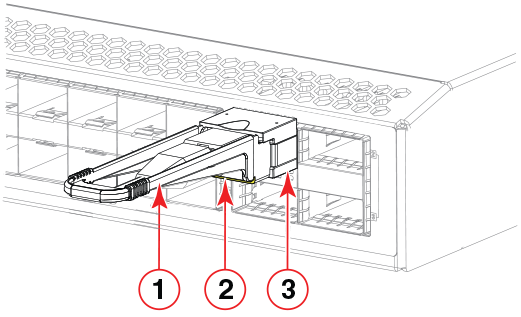Installing a QSFP28 transceiver
While non-Extreme optics are supported, Extreme-qualified transceivers are recommended. The port might not become operational or it may have a higher error rate using unqualified transceivers.
The following additional notes apply
to the QSFP28 transceivers:
-
While non-Extreme optics are supported,Extreme-qualified transceivers are recommended.
If using 40GbE-to-10GbE breakouts, each QSFP28 transceiver contains four individual 10 GbE ports. Be aware that any problems with one port could affect all four ports in the quad if the QSFP28 must be replaced. - Some QSFP28 transceivers have an integrated cable attached. You do not need to install a separate cable.
To insert an QSFP28 transceiver and cable, complete the following steps.



